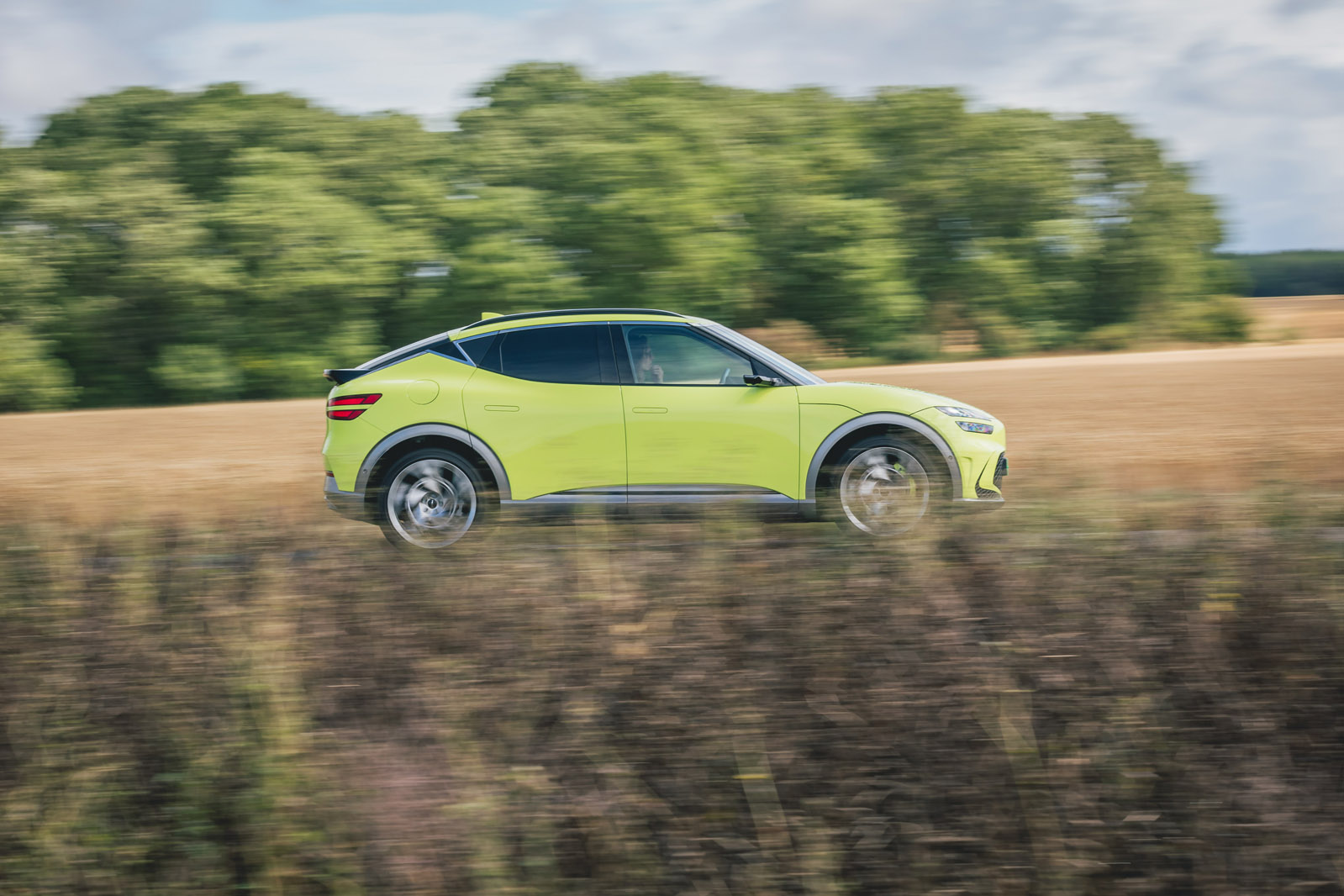Further suggesting that ‘Sport Plus’ might be a misnomer is that the GV60, with its sportiest suspension set-up and largest wheels, is still really rather comfortable. It doesn’t waft quite like a Hyundai Ioniq 5, and on some rough roads the chassis can become slightly restless, but the ride refinement is still miles ahead of the Mach-E and Model Y, and it beats the passively suspended EV6.
The GV60’s ride is absorptive but composed and even makes the awful concrete sections of the M25 tolerable. It’s quieter than its rivals elsewhere on the motorway, too, with road noise all but absent and just a bit of wind noise at higher speeds.
To achieve this refinement, Genesis has thrown its whole arsenal of tricks at the GV60. Foam inserts in the Genesis-specific Michelins and laminated glass work passively, while active noise cancelling through the speakers cleverly masks any remaining noise.
The Sport Plus is the only GV60 to get adaptive dampers, which are aided by a camera in the windscreen that scans the road ahead and primes the dampers for upcoming bumps and ruts. It’s a missed opportunity, however, that there isn’t a bigger difference between the Comfort and Sport settings on the dampers. It’s there, but you really have to be looking for it. There would absolutely be room to let the suspension breathe a bit more in Comfort and perhaps create a Sport Plus mode that tightens the body control even further than it does in the current Sport mode.
The seats could do with some work too. There’s no shortage of adjustment, and the optional ‘Ergo-Motion’ function that automatically turns on a short massage program to keep you comfortable on long drives actually works. They’re even accredited by the German AGR campaign for healthier backs. However, the padding is hard in the wrong places and the lumbar support is quite harsh. On the whole they’re comfortable, but they’re no match for the best luxury car seats.
The assisted driving features are a mixed bag: there are a lot of them, and core features such as adaptive cruise control and lane following work well. The lane keeping assistance is too intrusive but easily turned off, while the blindspot cameras also found in other Kias and Hyundais are as useful as ever. Some of the extra features, however, such as the automatic lane change function, automatic speed assist and remote parking, feel like gimmicks at best and half-baked beta trials at worst.
Track Notes

The 483bhp GV60 has no problem rocketing up Millbrook’s steep inclines, and the brakes cope fairly well with scrubbing off speed. The stability control is also finely tuned, dealing with slip and provocation smoothly and unintrusively.
However, the Kia EV6 revealed there is genuine dynamic talent in the E-GMP bones. Combine that with Genesis calling this version the ‘Sport Plus’ and it creates expectations the GV60 can’t quite meet.
There is a lot of grip, but the steering lacks the feedback and precision to give the confidence to really lean on it. And even though the stability control can be fully turned off, the GV60 feels resolutely front-led. An aggressive lift will get the chassis to rotate, but it refuses to do so on the power in its standard modes.
The Sport Plus features a Drift mode, but as the convoluted way of engaging it isn’t even included in the owner’s manual, we didn’t manage to test it on track.


































































